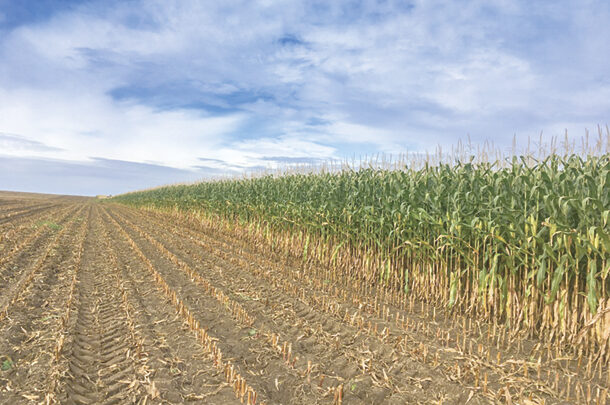All you need to know about the 2019 forage crop is in the silage pile. Under the plastic on many dairy farms, the current forage supplies may be the outcome of last year’s havoc-filled spring and fall.
As planting time approaches, your current situation may have opened a Pandora’s box of questions regarding the forages you plan to ensile this year.
You could be asking: Should I diversify my forages? Which forages offer the greatest performance potential? How much will it cost? Do I have the storage space to diversify? What forages fit into my soil conservation plans? How can I fill in shortages of feedstuffs from 2019?
While planning and evaluation are always smart, be careful not to take a knee-jerk approach when deciding what to plant this spring. You’ll need insightful solutions to move toward.
Here are some practical considerations to help you make forage decisions that provide the flexibility and performance you need in 2020 and beyond.
1. Use a wide-angle approach
It’s human nature to focus on recent history, but don’t fall victim to the baby-with-the-bathwater scenario. The results of a single year shouldn’t dictate your forage decision-making in 2020 or any other year.
Instead, take the long view to mitigate risk. Base your management decisions on results from the last five to 10 years.
First, think about what has worked well for you over time. Check your records to determine what forages have been consistent economical and productive choices for your operation.
Also, consult research, both national and local, to compare the potential of forages. In addition to yield, look for information about potentially digestible neutral detergent fiber (pdNDF) and undigestible NDF (uNDF) fractions, accurate cost of production estimates and timeliness of planting and harvesting considerations.
2. Prioritize profitability
In the simplest terms, dairy farm profitability boils down to this: The more a dairy cow can eat, the more she can produce. The more she can produce from what she eats, the more income over feed costs (IOFCs) can be realized.
Forages, which typically provide the majority of dairy cow nutrition and may account for over half the cost of production, are critical to profitability. Of all the areas a producer has to manage on a daily basis, forage quality should rank among the key decisions.
Quality forages provide a foundation for dairy success, according to Penn State University studies. Research from numerous institutions support this finding, indicating forage quality is a key driver separating the performance of herds that do well from those with more challenges.
3. Consider more corn silage
Because of its inherent qualities and IOFC potential, building a dairy diet on corn silage is best for overall profitability. Among the reasons corn silage makes an excellent foundational feedstuff:
-
Superior digestibility. Not just yield, but digestible yield, is the benchmark by which today’s forages must be measured. The accepted rule is that a one-unit increase in NDF digestibility results in an increase of 0.55 pound milk per cow per day.
-
High energy value. NDF and starch are the main sources of energy for dairy cows. Improvements in digestibility of these nutrients increase milk production and reduce feed costs through enhanced feed efficiency.
-
Cost-effective. Its low cost per pound of dry matter often makes corn silage the cheapest feed on the dairy.
- Reduced risk. One of the biggest reasons corn silage usage has grown over time is its consistency. Over the long haul, it demonstrates less quantity and quality variability – from very good to very poor in a single year – than hay.
4. Determine digestibility
Yield in forages is critically important. However, quantity is not enough for those seeking top performance in their herds.
It is becoming more important in ration modeling to evaluate forages on their yield of the potentially digestible portion of the fiber, and less on the indigestible. Advances in corn breeding have delivered hybrids developed especially for maximizing digestibility in corn silage.
When evaluating a corn hybrid, pay close attention to its lignin content. Lignin is the part of the cornstalk structure that makes it rigid. A higher lignin content decreases digestibility.
Look for corn hybrids that can improve whole-plant digestibility. Brown midrib (BMR) corn has a naturally occurring gene variation that reduces lignin, meaning this forage option offers the very highest fiber digestibility.
BMR hybrid seed is typically more expensive, but it can return in the range of 60 cents to $1 per head per day in milk and component gains versus non-BMR, according to recent research, such as a 2019 Miner Institute study. This is especially true when higher levels (e.g., total diet of greater than 50% corn silage) are fed.
High starch digestibility is also an important consideration for corn silage. Traditionally, starch digestibility has been enhanced by achieving optimum harvest moisture and proper kernel processing. Now, farmers also have the option of planting corn hybrids that produce a less vitreous kernel with lower starch-encapsulating prolamin. This promotes higher ruminal and total tract digestibility, reports a study by University of Wisconsin – Madison researchers.
5. Tap into tools
Evaluating forages to determine which hybrid offers the greatest profitability can be tricky. A management decision tool introduced at last year’s World Dairy Expo is quickly gaining traction among producers.
Developed by Mike Miller, research technician at the Miner Agricultural Research Institute of Chazy, New York, this tool helps dairy producers see the full picture when calculating the economics of BMR versus non-BMR corn silage hybrids. In a nutshell, this decision aid helps determine cost of feed and IOFC based on yield, growing and harvest input costs, NDF digestibility, uNDF, starch, starch digestibility, projected intake and potential milk.
The Miner Institute’s Corn Silage Hybrid Fiber and Starch Yields Calculator is at Miner Institute in the dairy management tools section.
Choosing the right forage for your situation is an important decision – one that can make the difference between profit and loss. Before making your choices, be sure to factor in technical information along with your experience and practical considerations to make the most of your forages in 2020.














